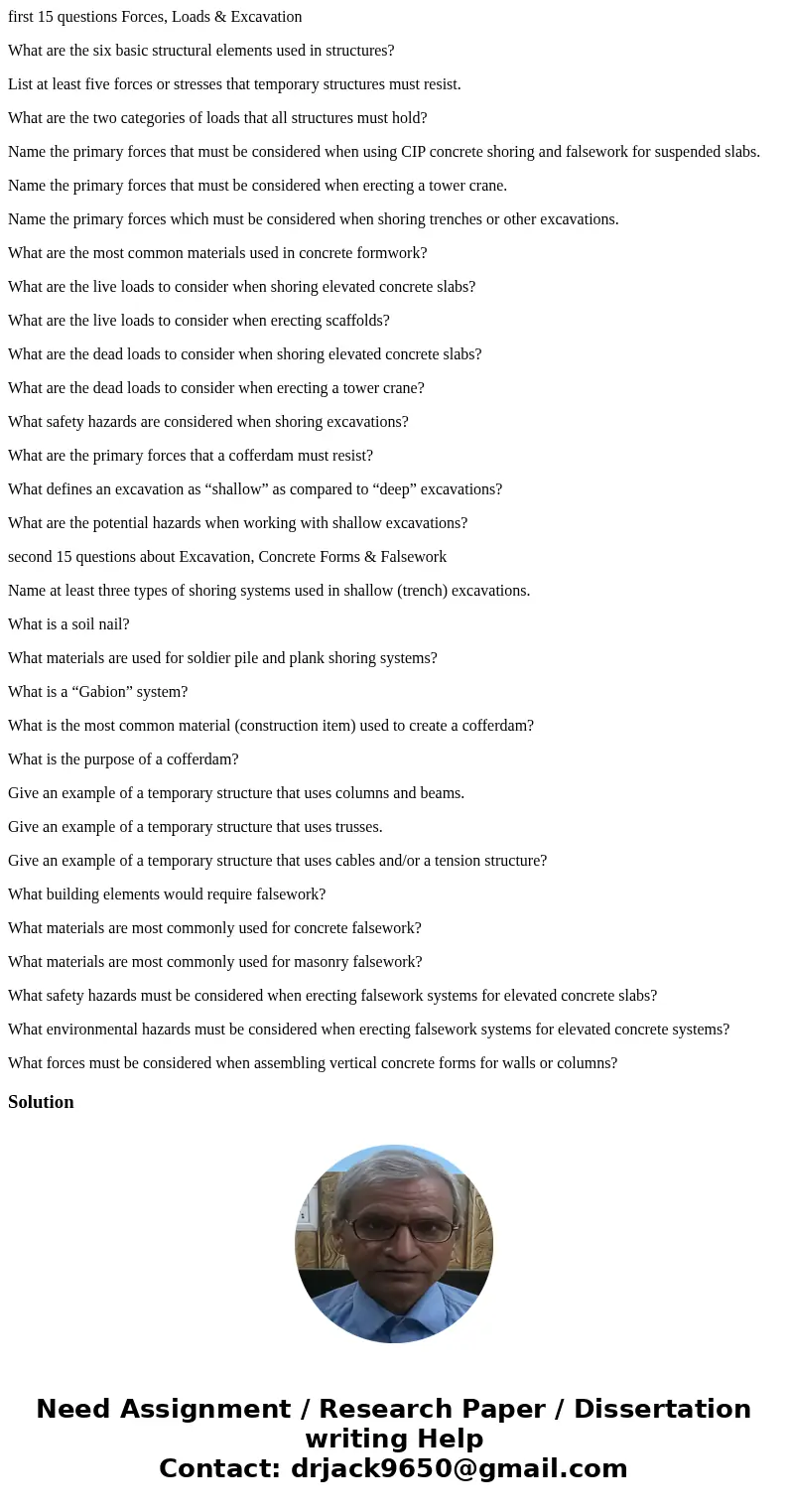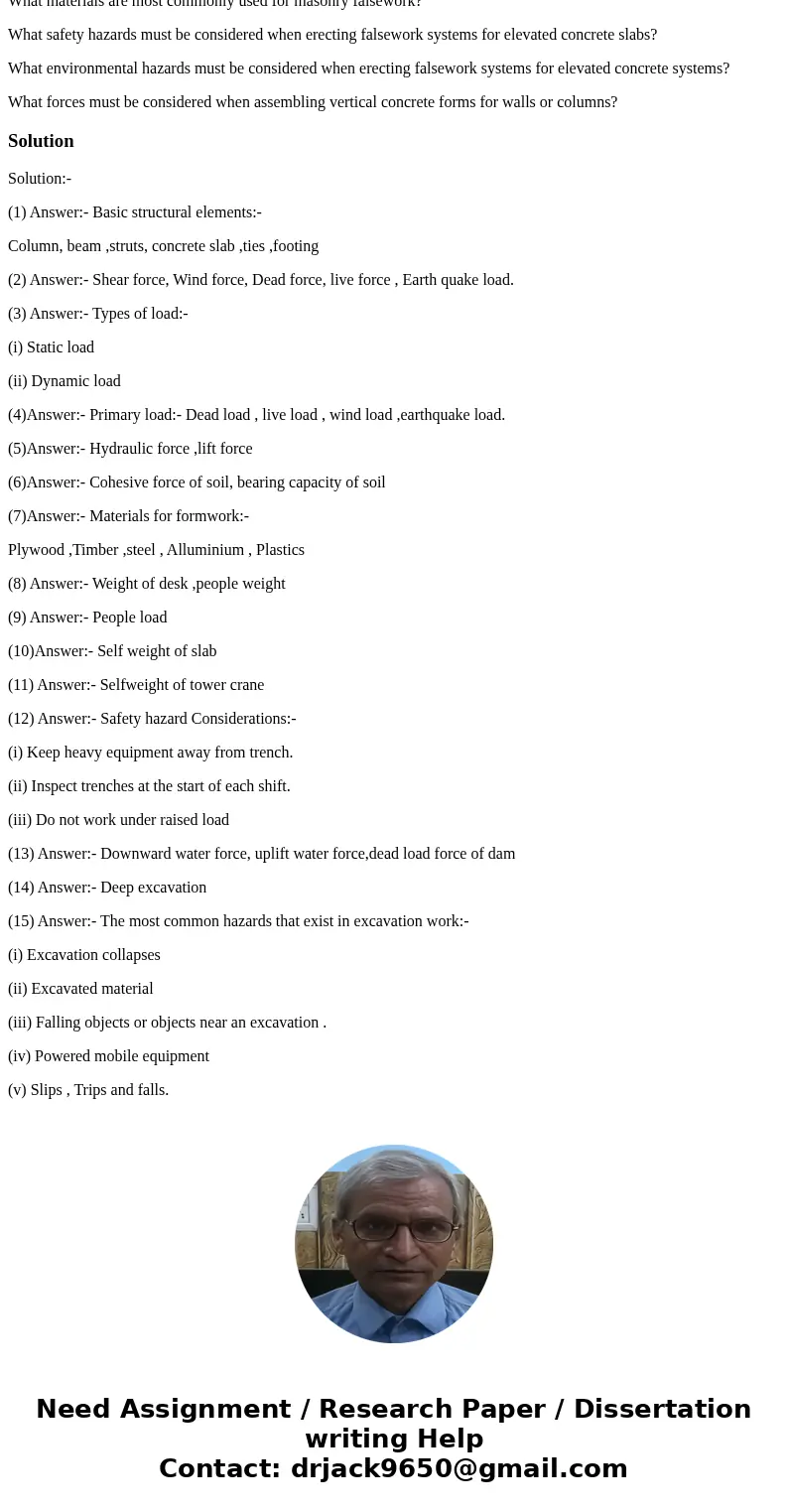first 15 questions Forces Loads Excavation What are the six
first 15 questions Forces, Loads & Excavation
What are the six basic structural elements used in structures?
List at least five forces or stresses that temporary structures must resist.
What are the two categories of loads that all structures must hold?
Name the primary forces that must be considered when using CIP concrete shoring and falsework for suspended slabs.
Name the primary forces that must be considered when erecting a tower crane.
Name the primary forces which must be considered when shoring trenches or other excavations.
What are the most common materials used in concrete formwork?
What are the live loads to consider when shoring elevated concrete slabs?
What are the live loads to consider when erecting scaffolds?
What are the dead loads to consider when shoring elevated concrete slabs?
What are the dead loads to consider when erecting a tower crane?
What safety hazards are considered when shoring excavations?
What are the primary forces that a cofferdam must resist?
What defines an excavation as “shallow” as compared to “deep” excavations?
What are the potential hazards when working with shallow excavations?
second 15 questions about Excavation, Concrete Forms & Falsework
Name at least three types of shoring systems used in shallow (trench) excavations.
What is a soil nail?
What materials are used for soldier pile and plank shoring systems?
What is a “Gabion” system?
What is the most common material (construction item) used to create a cofferdam?
What is the purpose of a cofferdam?
Give an example of a temporary structure that uses columns and beams.
Give an example of a temporary structure that uses trusses.
Give an example of a temporary structure that uses cables and/or a tension structure?
What building elements would require falsework?
What materials are most commonly used for concrete falsework?
What materials are most commonly used for masonry falsework?
What safety hazards must be considered when erecting falsework systems for elevated concrete slabs?
What environmental hazards must be considered when erecting falsework systems for elevated concrete systems?
What forces must be considered when assembling vertical concrete forms for walls or columns?
Solution
Solution:-
(1) Answer:- Basic structural elements:-
Column, beam ,struts, concrete slab ,ties ,footing
(2) Answer:- Shear force, Wind force, Dead force, live force , Earth quake load.
(3) Answer:- Types of load:-
(i) Static load
(ii) Dynamic load
(4)Answer:- Primary load:- Dead load , live load , wind load ,earthquake load.
(5)Answer:- Hydraulic force ,lift force
(6)Answer:- Cohesive force of soil, bearing capacity of soil
(7)Answer:- Materials for formwork:-
Plywood ,Timber ,steel , Alluminium , Plastics
(8) Answer:- Weight of desk ,people weight
(9) Answer:- People load
(10)Answer:- Self weight of slab
(11) Answer:- Selfweight of tower crane
(12) Answer:- Safety hazard Considerations:-
(i) Keep heavy equipment away from trench.
(ii) Inspect trenches at the start of each shift.
(iii) Do not work under raised load
(13) Answer:- Downward water force, uplift water force,dead load force of dam
(14) Answer:- Deep excavation
(15) Answer:- The most common hazards that exist in excavation work:-
(i) Excavation collapses
(ii) Excavated material
(iii) Falling objects or objects near an excavation .
(iv) Powered mobile equipment
(v) Slips , Trips and falls.


 Homework Sourse
Homework Sourse